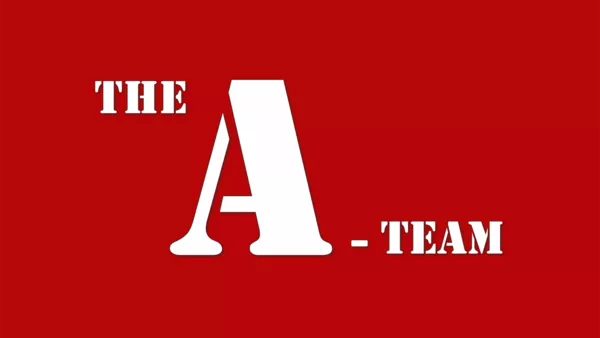Welcome back for part 2 of our 4 part series on how to embark on a successful new website project. This week we ask the question "How do I know how to hire the right web team to build my website?"
So you've realised by now that you need a new website that works harder for you. You've figured out what you need this website to do in order to successfully drive your business goals forward. You've convinced the person who holds the company purse strings that this is going to need to happen (we will get into budgets in part 3 next week). And now... horror - you actually need to think about how you're going to deliver!
There are several ways you can approach this problem.

1st approach: You need to find a web design and development agency who can build it for you.
Where do you start? Where does everyone start? Google.
So - you get in touch with three random companies you found online but...
- You've no idea what you're looking for, or if they can do what they say they can
- You could just to go for the cheapest quote, but you know that most often, you get what you pay for...
- You could go for the ones that seem most personable - or it might be a company someone you know has used, but you don't know if they'll be the right fit for you
- You have no idea how comparable their offerings are as there's no such thing as a 'standard' website or 'standard' web company, so you're comparing apples with pears
- You have no idea if you'll get good value for money or not - you don't want a rubbish website just because it's cheap, but then again you don't want to pay over the odds for something that won't return on your investment
So... you and hundreds like you try the 2nd approach...

2nd approach: You try and build it yourself with one of the cheap (or even free!) DIY tools out there
- Yay - you don't have to pay anyone! it can't be that hard… right?
- But uh-oh… once you start trying to put it together, you don't know quite what information you need (or what to leave out!), or how to convey it so it grabs your customers, and it turns out you're not a designer…
- In fact, although initially it looks simple, you don't have the time to mess about with learning this stuff as it's more fiddly than you thought - and you've got your day job to do!
- You can see that without experience in user interface design, it's easy to make something ugly and unusable, and you don't even know why it looks so dreadful or what will make it better… in fact, you don't even really know what you want your users to do, or what is most important to convey to them first…
- So you've wasted your valuable time and still don't have the desired result. you might have the tools but you still don't have the experience - if only you were an expert in online human behaviour, information hierarchy, visual communication...
It's becoming clear that this is a risky task, and you're in uncharted waters. Building the wrong thing (or choosing the wrong company to build it) will mean you'll waste money (and your professional reputation in the process) if you build something that's below parr. It's possible you could cause more damage than benefit.
So you bite the bullet and think (for at least 3 seconds) about the 3rd approach...

3rd approach: hiring your own dedicated team
You tally up the resources you need, and look at the bill. And unless you have a seriously big budget and big plans for the headcount you're committing to, this will be the end of that option for many companies like you.
Is there another way? It's likely you need a 'big push' to get a new site out there first, then perhaps some ongoing enhancements and maintenance at a lower rate of development. That means you want a team that's flexible. It needs to be done within a realistic budget so that it pays for itself. But you need something better than you can generate in one of the DIY tools out there. It needs to be properly responsive so it works on mobile devices as well as desktops and laptops, beautiful and well-designed (by someone who is an expert in human online behaviour, visual hierarchies and content architecture) and easily discoverable in search engines. It needs to fulfil all the user stories and business goals you've identified.

You need... THE 'A' TEAM. And here are 5 ways to tell if they are.
The 'A' TEAM is one that is 'appropriate' for your needs. Not necessarily the cheapest. Or the flashiest. Or the biggest. In fact 'appropriate' will mean different things to different people who have different requirements - and this is the key.
So here are the 5 universal principles you should bear in mind which will help you select the right team to help you, no matter what your requirements are.
The 'APPROPRIATE' team is always:
1 - Focused on their clients rather than own egos and achievements - and most importantly (wait for it)… they actually LISTEN to you
In your initial consultation with them, they take the time to find out lots about your business and your overarching goals, because they'll want to make sure your needs are properly met, and that your site returns on its investment too. In fact, they'll also not be afraid to tell you if they think you're not the right client for them, either, based on your needs.
In your initial consultation with them, they go on about their accolades, tell you more about their latest cool project and their other clients than listening to your needs. They're so busy talking about themselves, that you come away wondering if they did actually grasp (or even hear?) what it is you wanted...
2 - Able to provide a team you feel you can work with who don't blind you with science
When talking about the technology they offer, it's referred to as a tool, not the epicentre of their universe (even if they're passionate about it!). They can explain easily and simply how they will use the best technology in order to solve the right problems for you.
When talking about technology, they eulogise so much about their use of the latest technologies, using terms you don't understand, that you end up totally baffled. You don't even understand how what they are talking about relates to the problems you need solving.
3 - Flexible in their approach, so they can deliver your work in phases or as a 'big bang' launch, can partner with you to figure out the right scope for your budget, and deliver it in a way that works best for your business
When taking you through their process, they speak about different delivery methods, project management methodologies, and approaches. They want to know how your business likes to receive information, who the key stakeholders are and what roles they will play in the project, encourage your involvement, and give you clear choices (but also won't be afraid to advise you when they think something may not work, based on past experience).
When taking you through their process... oh, they don't have a process? Don't mistake 'super-flexible' for 'totally disorganised'! Conversely, if their process is so rigid, and their cost structure so obscure, that you dread to think what will happen to your budget if you have any unforeseen amends half way through the project... then trust your gut, as you could end up being held to ransom in order to finish your project.
4 - Experienced in the right range of skills to meet your needs now, but also to grow with you and support you going forward - both from a software and a relationship perspective
Their capabilities interleave together - they offer services which not only might be useful to you right now, but also in future. They demonstrate the appropriate depth of experience needed for the size and complexity level of your project both now, and the next 1-2 years, so they are capable of growing with you from small acorns to large oak trees, if that's what you require. They have a significant amount of repeat business from loyal customers who they've been working with for over a year or more.
You're unclear who does what at their organisation, and they're evasive and non-specific about who delivered what for which of their projects. Or they may have a clear team with clear roles and skills, but they are 'hit and run' deliverers... when asked about ongoing relationships with clients, they avoid the subject and don't have any evidence of growing with a client's requirements at all. Just a handful of one-offs. Which leads us nicely to the final point...
5 - Able to do what they're saying they can
They have a range of case studies and testimonials available for you to look at which demonstrate their skill sets and the clear ROI the projects drove, and would be more than happy for you to talk to existing clients.
They don't really have much proof available to back up their claims, and become evasive when asked about speaking with any of their clients or when asked for testimonials.

In conclusion...
You need to make sure you get the 'A' team on your project if you want to set yourself up for success.
There are no hard and fast rules as to who they should be, as there are as many web companies out there as there are different projects, requirements and businesses.
But stick to the 5 golden rules, and you will be selecting your perfect team with your eyes wide open, and your cash firmly under your control.
Join me for the next instalment where we really get down in the nitty gritty... and talk about that subject close to everyone's hearts... budgets.








